The 24-year-old embalmer preparing bodies for 'last goodbyes'
- Published
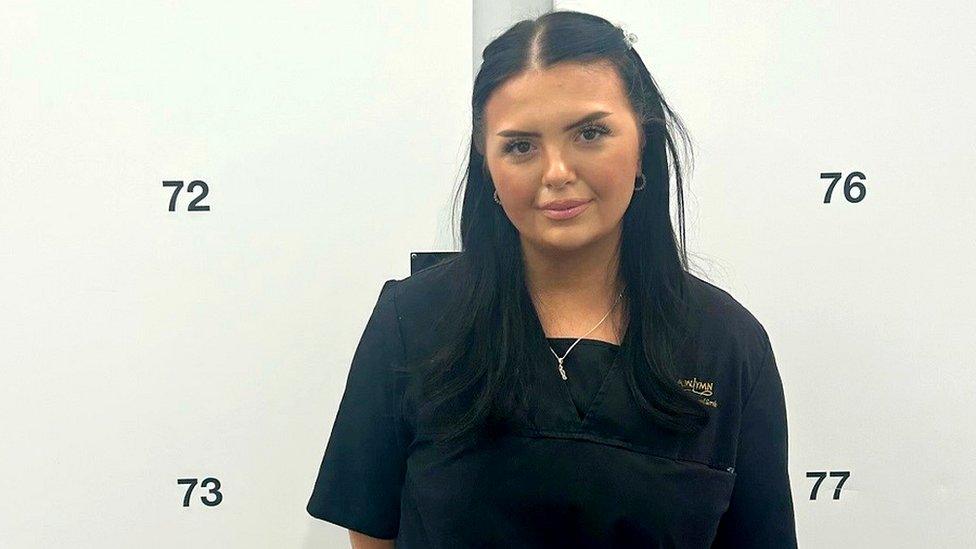
"People are surprised how young I am," says Ms Walton
Isabel Walton spends her day surrounded by dead bodies and says she is proud to get the recently deceased "ready for their last goodbyes". The young embalmer is one of the people Stacey Dooley met behind the scenes when the TV presenter confronted her fear of death and witnessed an embalming.
There is an unusual smell in the cold and sterile mortuary.
"We have a ventilation system on, but people aren't used to the chemicals we use. Whereas I'm completely nose-blind to everything," says Ms Walton.
Being a mortuary manager is not a typical job for a 24-year-old.
"People are surprised how young I am and being a woman," she says, "because it's a male-dominated industry still."
Ms Walton started with A W Lymn, in Nottingham, as a trainee funeral director in 2019 - but found her calling in the company's mortuary. She began working there full time aged 21, while also studying for her embalming qualifications.
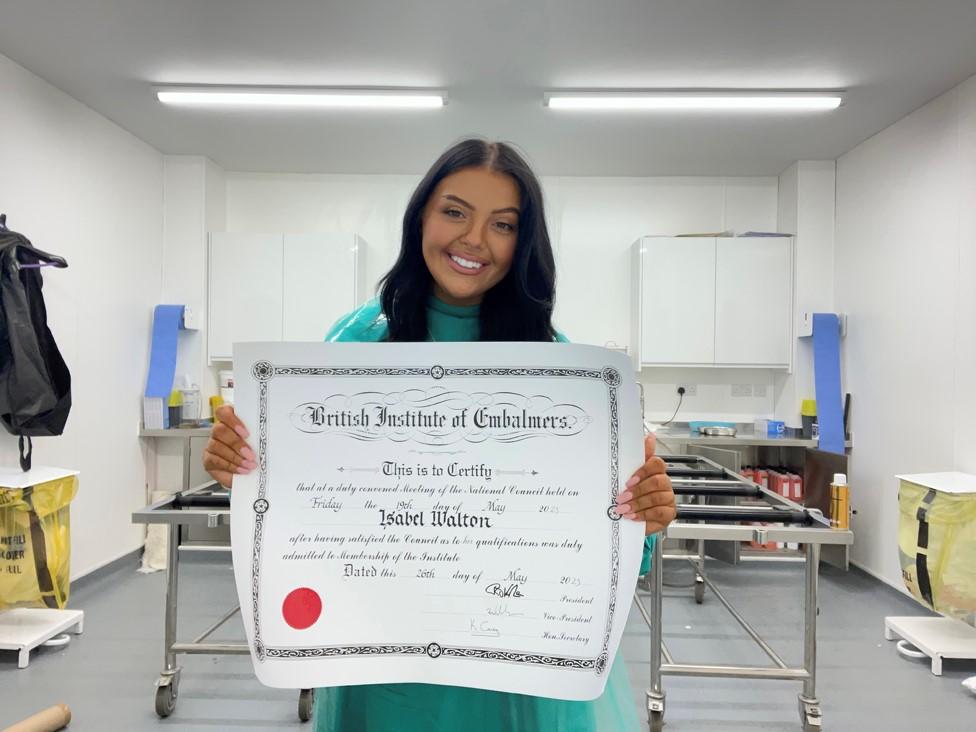
Ms Walton studied for her embalming qualifications while working full time
Being one of the youngest, she "stuck out like a sore thumb" on training courses. Her family have always been supportive, but her friends were "gobsmacked" when she told them what she would be doing.
Stacey Dooley recently spent time in the mortuary for BBC One as she tried to confront her attitude to death - which she accepts is an "irrational fear of the inevitable".
"I just want to live forever, which I appreciate is not on the cards," says the TV presenter.
But far from being scared, Ms Walton says being surrounded by death all the time has given her comfort. "I know that I will be taken care of if anything happens."
The mortuary holds up to 80 bodies. Each one is stored for an average of 15-20 days.
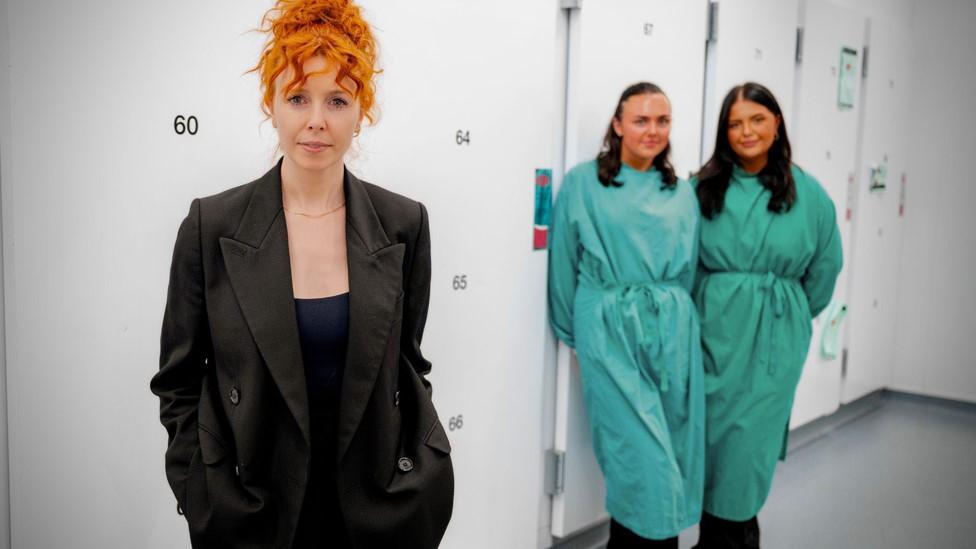
The mortuary was not an easy space in which to spend time, says Ms Dooley (left)
Many people think someone who is deceased is just placed in a coffin before the funeral, says Ms Walton, but she spends time preparing bodies so loved ones can view or spend time with them before they are laid to rest.
She washes the bodies, combs or shaves their hair, dresses them, and applies makeup.
"If someone has been poorly for quite a while and been in hospital, families might not be used to seeing them with a beard," says Ms Walton. "They would want them to wear their Sunday best and be all clean shaven and looking smart again."
She and her colleagues also embalm about 65% of the bodies, preserving them for longer and slowing down decomposition. Depending on the funeral package, families can request this treatment, which can give a body colour and "plumpness again" and a more "lifelike" appearance, says Ms Walton - useful especially if the lid of a casket is to be left open during a funeral service.
"I put a lot of time and effort into what I do. I don't think people realise how much care goes into the role," she says.
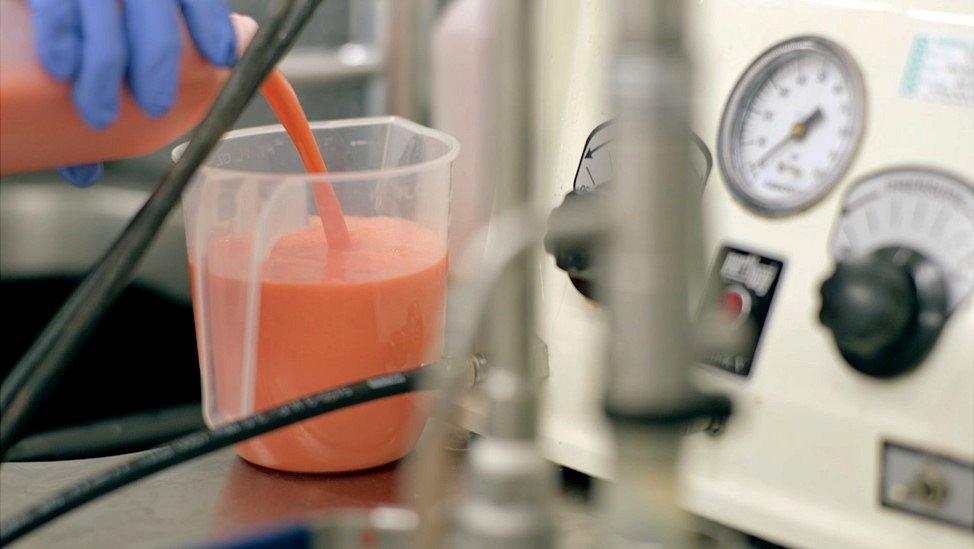
The embalming solution of formaldehyde often contains a pink dye
During the embalming process, the body is cleaned and the mouth sutured closed. Blood is removed and embalming fluid - containing the disinfectant formaldehyde - is pumped around the body. Fluid and gases in the body's organs are also removed and replaced with embalming fluid.
Some religious faiths prohibit the embalming process and it isn't typically used in green burials, because of the chemicals.
Sometimes, if someone has had a traumatic death, Ms Walton has to carry out reconstruction work on a body - first embalming the damaged tissue, and then using wax and special makeup.
It is not like "living people makeup," she explains. "We use mortuary makeup, so it sits on chilled skin better."
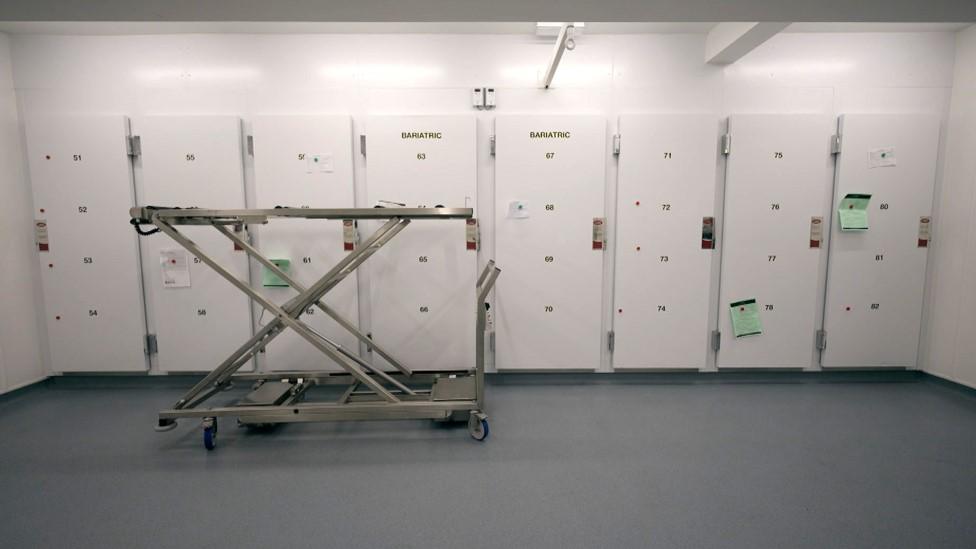
There are no windows in the sterile mortuary
The winter, from December to March, is a busier time for funeral directors as statistically more deaths occur. But currently in the mortuary, Ms Walton embalms about three to four bodies a day.
"There are no windows," she explains. "The only time I see daylight is to go and make a coffee."
It can be emotional meeting mourning families, she says - but she tries to switch off and concentrate on providing a professional service.
"Obviously you're trying to comfort them, they're not comforting you," she says.
Ms Walton says she wants to challenge stereotypes in her industry - both in the mortuary and attending funerals. If she is asked to help at a service, she is often the only female pallbearer - but recently, at one funeral, there were four women working.
"The mourning family had never seen anything like it before," she says. "They said the deceased would have loved to have seen it - because she was a strong, independent woman."
Stacey Dooley: Inside the Undertakers is on Thursday 9 November at 21:00 GMT on BBC One or watch on BBC iPlayer.
If you are affected by any of the issues raised in this story, support and advice is available via the BBC Action Line.
Explore the unexpected places the dead are buried with The Open University., external